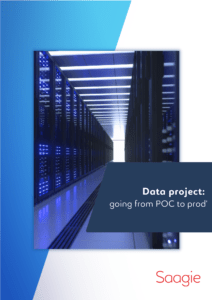By deeply analyzing and exploiting data every business is able to optimize its assets and operational performance. That is the concept of predictive maintenance.
A Definition of Curative (or Corrective) Maintenance
Curative maintenance consists in quickly repairing the machine after a breakdown happens. However, this technique is less and less efficient over time because of impacts on production and repair costs. Focusing only on a curative maintenance needs ever increasing financial and human resources.
A Definition of Preventive Maintenance
Preventive maintenance relies on maintaining devices and supplies at regular intervals (inspection, cleaning, replacement parts, analyses of fluids and so on) while the machine is still working in order to avoid serious breakdowns. Performing regular preventive maintenance will help companies to reduce the number of breakdowns and thus minimize costs related to curative maintenance actions.
What About Predictive Maintenance?
Predictive maintenance consists in forecasting breakdowns even before they materialize by analysing historic data that are likely to predict a malfunction. Various data sources can be used such as IOT sensors, machine data and asset management software.
The main goal of predictive maintenance is to avoid breakdowns that tend to have serious financial and organisational impacts. Predictive maintenance helps avoiding breakdowns and expensive repair actions. Indeed, serious dysfunctions do cost a lot to fix and will harm the company’s short-term and middle-term productivity and profitability.
The Main Advantages
Whereas curative maintenance implies high repair costs for every breakdown, predictive maintenance allows companies to:
- Improve the equipment’s lifespan
- Limit risks of serious breakdown
- Avoid unplanned production stops
- Remove expensive repair actions
- Plan preventive maintenance
Data analytics indeed helps emphasizing risk factors of a malfunction as well as forecasting machine maintenance. Information extracted from data will trigger decision making. For instance, by predicting a breakdown, predictive maintenance will lead to a corrective action at the right time to avoid breakdowns and optimize resources.
Using Data for Predictive Maintenance
Thanks to mathematical algorithms, a data scientist is able to create accurate predictive models for the parts of your assets by displaying the evolution of break-down probability over time and by defining a threshold that can trigger an alarm.
When will your machines be more likely to suffer a malfunction? When do you have to plan your predictive maintenance actions?
Collecting as much data as possible on the use of your devices has never seemed more important. The reliability forecast the data scientist has created will help your business to make the most of your company’s financial and human resources.
The Saagie Approach
The Saagie platform helps you to detect weak signals and improve the performance of your assets by making the right decisions and perform the right actions before it is too late.
How to make this happen? First, simply by collecting data from various sources: IOT sensors, raw machine data, CMMS… and store them in a data lake. Afterwards, during analysis of the sequences of your data, the Saagie platform will help you make the most out of a series of custom algorithms. Data scientists will define efficient predictive models for predictive maintenance. Finally, thanks to Saagie, you will easily and effectively reduce repair actions for your assets and optimize financial and human resources.









